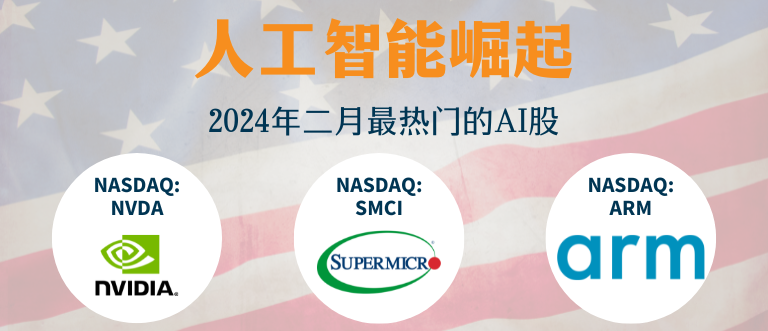Physical ETF
Table of Contents
Physical ETF
Potential ETF investors must decide, among other things, whether to put their money into funds that employ synthetic replication or physical replication. This article summarizes the two formats to help advisers make the best possible ETF selection selections for their clients.
What is a Physical ETF?
Physical ETFs hold an index’s fundamental components. Compared to other structures, these ETFs are usually more open and simple and have little to no counterparty risk. They provide insight into an index’s performance using three typical methods: optimisation, stratified sampling, and complete replication.
Understanding Physical ETF
By actually owning some or all of the underlying assets of an index, a physical ETF can mimic the index’s performance. In contrast, a synthetic exchange-traded fund (ETF) uses swap agreements to mimic the index’s performance. In most cases, this implies that synthetic ETFs hold a diversified portfolio of assets that have nothing to do with the underlying index. In a swap contract with a counterparty—typically an investment bank—they trade the index’s performance for that of this basket.
Certain investors may be unconcerned about how an exchange-traded fund (ETF) attempts to replicate the index’s performance. That said, some people may have a strong preference.
Fortunately, exchange-traded funds (ETFs) are open about their replication practices; it is stated in the prospectus and package as to whether an ETF is physical or synthetic.
Risk of Physical ETF
The absence of adviser interaction about security lending in physically backed ETFs is perhaps the most shocking to us, considering the aversion to counterparty risk in synthetic ETFs.
If a synthetic ETF uses a diversified panel of counterparties and is careful with collateral, the counterparty risk it bears when lending assets is virtually identical to that of a real ETF.
Security lending has opportunities for both risk and reward, much like synthetic ETFs.
Lending a position in securities is a common way for one party to cover a short position for another. In exchange, the other party will pay the agreed-upon rate and submit collateral. The supply and demand market forces determine the prevailing exchange rate for any security. For instance, a stock with a modest market cap and little trading volume can ask for a higher rate. Rates have dropped substantially since the financial crisis due to the decline in central bank rates, which are tied to general interest rates. While a high-yield bond can offer close to 1%, putting together a big blue-chip stock might only yield a few basis points.
The counterparty risk is associated with the borrowers rather than the loaned assets themselves, even if returns per security do fluctuate. The additional return must be weighed against the (albeit little) counterparty risk before making a decision.
Understanding the approach to securities lending is a crucial component of our due diligence process for choosing ETF providers.
Benefits of Physical ETF
By owning all of the underlying securities that make up the target index, or a representation of them, a physical ETF aims to mimic the performance of that index. A physical replication entails purchasing and selling the index’s components; this process is labour-intensive and, depending on the ETF’s quality, might be prone to tracking mistakes.
When purchasing the underlying assets, the supplier has two options: acquire them entirely or create an optimal sample. A lot of people think there ought to be a separation between sampling and complete replication when it comes to physical ETFs. Full replication is often considered the gold standard among replication methods. On the other hand, full replication may not be beneficial to the portfolio in big global markets due to the high expense of carrying out all the transactions. Sampling helps cut down on these administrative expenses, but it could lead to more tracking errors as it doesn’t follow the entire index. Large, liquid markets are ideal for physical exchange-traded funds.
Examples of Physical ETF
Investors should think about ownership, monitoring expectations, asset class, and product complexity level when choosing an exchange-traded fund (ETF) based on a replication approach. Physical exchange-traded funds (ETFs) possess either all or part of the underlying securities of the index. Simultaneously, investors in synthetic ETFs just have the legal right to own reference baskets or underlying collateral pools, which could or might not coincide with their overall risk and return objectives.
Conclusion
Among the many benefits of exchange-traded funds (ETFs) are their low fees, transparency, and diversity. If you’re a passive investor trying to track a certain market index or theme, they might greatly complement your portfolio.
You may easily include exchange-traded funds (ETFs) into your portfolio with the help of ICICI Bank’s platform, which offers access to a broad variety of ETFs. If you want to reach your financial objectives, whether you’re an experienced investor or just getting your feet wet, it’s a good idea to learn about exchange-traded funds (ETFs) and how they work.
Since they provide a transparent and cost-effective means for investors to get exposure to a wide range of asset classes and market sectors, Exchange-Traded Funds (ETF) Mutual Funds have grown in popularity in India. If you know how they function, what elements to consider, and how they affect your taxes, you can make educated investment decisions that are in line with your financial goals. If you want to diversify your investments and maybe increase your profits, ETF mutual funds are a good option to consider.
Frequently Asked Questions
While exchange-traded funds (ETFs) that track physical assets hold those assets, synthetic ETFs engage in a swap arrangement with another entity that promises to pay out the index’s return (after costs) instead.
Think about what the clients want to achieve with their investments before deciding between the two options. In general, physical ETFs carry less risk and are more readily available. While synthetic exchange-traded funds (ETFs) provide a wider range of assets and the possibility of larger returns, they also carry a higher degree of risk.
First, consider the ETF’s past performance, the index it is based on, its structure, when and how you may trade it, and its cost.
A physical exchange-traded fund (ETF) invests in all of the companies that make up the underlying index by the index’s weights. In other words, a physical ETF that follows the S&P 500 acquires all of the S&P 500’s equities.
Easy intraday trading, relative transparency, and the possibility of tax efficiency—all at a lower total cost than most actively managed mutual funds—are just a few of the reasons why ETFs have become increasingly popular.
Related Terms
Most Popular Terms
Other Terms
- Options expiry
- Adjusted distributed income
- International securities exchanges
- Settlement currency
- Federal funds rate
- Active Tranche
- Convertible Securities
- Initial Public Offering
- Buyback
- Secondary Sharing
- Bookrunner
- Notional amount
- Negative convexity
- Jumbo pools
- Inverse floater
- Forward Swap
- Underwriting risk
- Reinvestment risk
- Final Maturity Date
- Payment Date
- Secondary Market
- Margin Requirement
- Mark-to-market
- Pledged Asset
- Yield Pickup
- Subordinated Debt
- Trailing Stops
- Treasury Stock Method
- Stochastic Oscillator
- Bullet Bonds
- Basket Trade
- Contrarian Strategy
- Exchange Control
- Notional Value
- Relevant Cost
- Dow Theory
- Speculation
- Stub
- Trading Volume
- Going Long
- Pink sheet stocks
- Rand cost averaging
- Economic Bubble
- Ask Price
- Constant prepayment rate
- Covenants
- Stock symbol
- Companion tranche
- Bourse
- Beneficiary
Know More about
Tools/Educational Resources
Markets Offered by POEMS
Read the Latest Market Journal

本文旨在为中级外汇交易者提供必要的信息和知识。它将涵盖我们上一篇文章 “五分钟看懂世界上最活跃的市场-外汇差价合约(FX CFD)...

解锁台湾股市的投资潜力!深入了解由强大的技术驱动型经济推动的股票市场,2023 年机械和电气设备将占出口的 69%。在政治稳定、投资者友好的法规和健全的法律框架下,探索台积电和富士康等全球顶级企业。台湾股市值得称赞的历史表现和在国际贸易中的的重要性使其更具吸引力。在这个科技实力雄厚、经济稳定、充满活力的股票市场中,抓住增长机遇!

了解外汇市场 外汇交易市场又称外汇市场,是一个买卖货币的全球性金融市场。它是全世界规模最大、流动性最强的金融市场,每日交易量超过 6 万亿美元。但外汇市场有一个重要却常被忽视的一点,就是它受交易心理的影响。在本文中,我们将探讨外汇市场的复杂性,还有把重点放在交易心理与传统交易策略共同发挥的关键作用...

五分钟看懂世界上最活跃的市场 -外汇差价合约(FX CFD)
外汇交易市场俗称外汇或外汇市场,是全球金融市场的支柱。它是世界上最活跃的市场,2022 年 4 月,全球交易额达到创纪录的每天 7.5 万亿美元[1] 。这个活跃的市场为交易者提供了利用货币价格波动赚取利润的机会。在本文中,我们将解释外汇市场的基本原理,助您了解其投资机制。 什么是外汇? 外汇市场是一个分散的全球市场,世界上所有货币都在这里进行交易...

随着通胀数据趋向 2% 的理想目标,人们普遍乐观地认为,在任何可能的降息之前,市场都不会受到不利影响。以下是美股市场2024年的一些重要事件,投资者在做出投资决策时可以参考留意。

根据《东南亚态势报告:2023》,失业和经济衰退是当前东南亚面临的主要挑战。各国采取了各种政策和措施以恢复经济,尽力摆脱新冠疫情的影响。尽管如此,越南在经济和社会方面展现出了令人满意的复苏迹象,经济增长逐季上升,成为世界经济的亮点之一。虽然全年GDP增速放缓至5.05%,低于政府6.5%的目标,但越南仍然是地区和世界经济增速较快的国家之一。






















